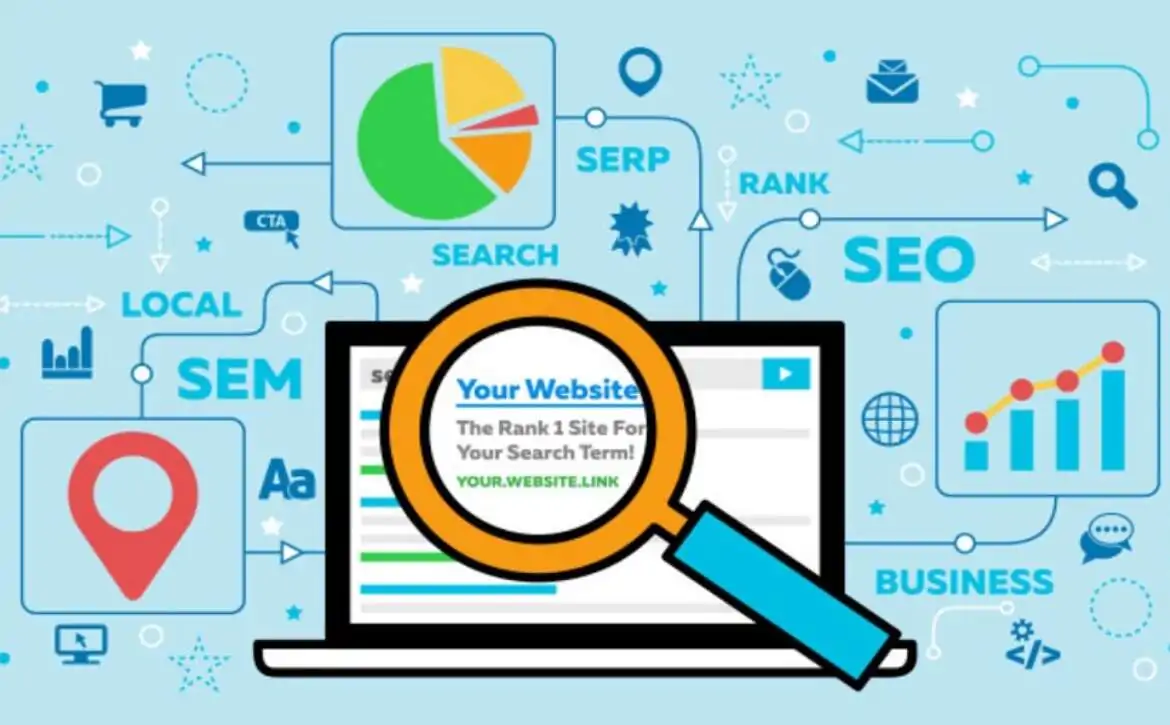Why SEO for My Website Matters and How to Do It Right
In today’s digital world, having a website isn’t enough—you need to ensure it ranks well on search engines to attract visitors. This is where SEO for my website becomes crucial. Search engine optimization (SEO) is the process of improving your website’s visibility on search engines like Google, increasing organic traffic, and enhancing user experience. If you’re wondering what is SEO and how it works, it involves optimizing content, structure, and performance to meet search engine criteria.
For those looking for SEO for my website free, there are many ways to improve rankings without spending a fortune. SEO helps websites get discovered by potential customers, increasing brand awareness and online credibility. Without SEO, even the best-designed websites may struggle to attract visitors, making it difficult to achieve business goals.
When it comes to how to do SEO for a website step-by-step, the key lies in a strategic approach. This includes keyword research, on-page optimization, technical improvements, and off-page strategies such as link building. Proper SEO implementation ensures that your website ranks higher in search results, making it easier for users to find your content and services.
This guide will walk you through the best SEO for my website strategies, including real search engine optimization example techniques. Whether you’re a beginner or looking to refine your current SEO approach, you’ll learn essential methods to boost your website’s rankings and drive sustainable traffic. If you want to improve your Google rankings, let’s dive into the best practices for Google SEO and how to do it right.
Why SEO for My Website Matters
Search engine optimization (SEO) plays a crucial role in determining the success of any website. Without effective SEO strategies, even the most visually appealing and content-rich websites may struggle to gain visibility and attract visitors. SEO is essential because it helps search engines understand your website’s content and present it to users searching for relevant topics. When properly optimized, your website can rank higher in search engine results pages (SERPs), leading to increased organic traffic and better engagement with potential customers.
One of the biggest benefits of SEO is that it helps drive targeted traffic to your website. Unlike paid advertising, which stops generating results as soon as you stop funding it, SEO continues to deliver consistent traffic over time. By optimizing your content with relevant keywords such as SEO for website free and implementing strong link-building strategies, you ensure that your site remains discoverable by users actively searching for your products or services.
Additionally, SEO enhances credibility and trust. Websites that appear at the top of search results are often perceived as more reliable and authoritative. This credibility translates into higher user trust, increased engagement, and ultimately, better conversion rates. Furthermore, SEO isn’t just about ranking higher—it also improves the overall user experience. Google prioritizes websites that load quickly, are mobile-friendly, and offer valuable content. By focusing on Google SEO best practices, you not only improve rankings but also create a seamless browsing experience for visitors.
Another critical aspect of SEO is its ability to provide a competitive edge. Your competitors are likely investing in SEO, and if you don’t, you risk falling behind in the market. Businesses that consistently optimize their websites gain an advantage by attracting more leads and customers. Moreover, local SEO strategies help businesses target audiences within specific geographic areas, making it easier for potential customers to find and engage with them.
Lastly, SEO contributes to higher return on investment (ROI) compared to other marketing strategies. Since organic traffic generated through SEO is free, businesses can significantly reduce marketing costs while achieving long-term success. Unlike traditional advertising methods that have a short lifespan, SEO efforts compound over time, delivering sustained growth and visibility.
How to Do SEO for Website Step-by-Step
Here is the step by step guide.
Step 1: Perform Keyword Research
Using tools like Google Keyword Planner, find relevant keywords such as SEO for my website free and integrate them into your content.
Step 2: Optimize On-Page SEO
- Use keywords naturally in titles, headers, and meta descriptions.
- Write high-quality, engaging content.
- Optimize images with alt tags.
- Improve internal linking for better navigation.
Step 3: Improve Technical SEO
- Ensure fast page speed.
- Use HTTPS for security.
- Implement mobile-friendly design.
- Fix broken links and ensure proper URL structure.
Step 4: Focus on Off-Page SEO
- Build high-quality backlinks.
- Promote content on social media.
- Engage with online communities and forums.
- Leverage influencer marketing for wider reach.
Step 5: SEO for My Website: Monitor Performance and Adjust
Use Google Analytics and Search Console to track performance and make improvements.
- Regularly update old content to maintain relevance.
- Conduct A/B testing for headlines and meta descriptions.
- Analyze competitor strategies and adapt accordingly.
In the end, SEO is essential for online success. By following these steps, you can achieve the best SEO for my website, improving visibility and driving more traffic. Start optimizing today and see the benefits of search engine optimization in action!



